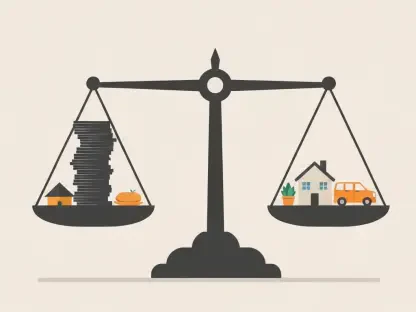Tax season in Canada not only brings the usual challenges of filing returns and ensuring all documents are in order but also an increase in tax-related scams that target individuals’ personal information and finances. The Canada Revenue Agency (CRA) has warned about rising incidences of fraudulent activities during this critical time, where cybercriminals exploit taxpayers’ heightened anxiety about compliance, possible errors, and refunds. Understanding these scams and adopting protective measures can mitigate the risk and safeguard against potential financial and identity theft.
CRA Phone Scams
One of the most common tax scams in Canada involves fraudulent phone calls from individuals impersonating CRA officials. Scammers often use spoofing technology to make their calls appear legitimate, showing a local number or even the CRA’s hotline on a recipient’s caller ID. They typically claim the target owes back taxes and demand immediate payment through hard-to-trace methods like cryptocurrencies or gift cards. The fraudulent callers may employ intimidating language, threatening arrest, deportation, or legal action to induce panic and prompt victims to comply quickly.
It is crucial to be aware that the real CRA does not employ such tactics. The CRA will never request sensitive information over the phone, nor will it demand payment in unconventional forms like bitcoins or gift cards. If someone receives such a call, they should hang up immediately and contact the CRA directly through verified channels to confirm the legitimacy of the communication. Furthermore, keeping a record of the fraudulent call details can help in reporting the incident to the appropriate authorities, thereby aiding in the crackdown on these scammers.
Phishing Emails and Texts
Phishing remains a pervasive threat during tax season. These scams involve fraudulent emails or text messages that appear to originate from the CRA, urging recipients to click on a link or download an attachment. The content typically conveys a sense of urgency, such as an outstanding tax balance or a prompt for account verification. On clicking the link or downloading the attachment, individuals are directed to a fake website or malware is installed on their device, leading to personal information theft, including Social Insurance Numbers and banking details.
To counter phishing attempts, it is vital to verify any suspicious email or text message. Checking the sender’s email address for any discrepancies or the presence of minor alterations that hint at spoofing can be a useful start. Additionally, the CRA’s official website uses “https://”—ensuring any interaction with it feels secure. Most importantly, avoid clicking on links or downloading attachments from unsolicited communications. Using reputable antivirus software can also provide an additional layer of defense by detecting and blocking malicious content.
Social Media Scams
Social media platforms present another avenue for tax scammers. Criminals often pose as either CRA officials or representatives of financial institutions, messaging individuals with tempting offers regarding tax refunds or claiming problems with their tax filings that require immediate attention. These fraudulent accounts may utilize official logos and elements to appear convincing, luring individuals into divulging private information or making unnecessary payments.
Exercise caution when engaging with such correspondence on social media. The CRA does not conduct any type of communication through social media channels concerning a taxpayer’s personal information or tax matters. It’s advisable to report any suspicious accounts immediately to the platform administrators and avoid disclosing any personal or financial information through these mediums. Instead, official CRA portals or direct phone communication should be used for any tax-related inquiries or issues.
Fake CRA Websites
With advancements in technology, particularly in artificial intelligence, scammers have become adept at creating fake CRA websites that closely mimic the official site, making it difficult to distinguish between the legitimate and fraudulent ones. Unsuspecting taxpayers who visit these fake sites may unknowingly provide their personal information, thinking they are interacting with the official CRA.
To avoid falling victim to these fake CRA websites, always ensure the website URL starts with “https://,” which indicates a secure connection. Additionally, the official CRA website domain is “canada.ca,” and any deviation should be treated with suspicion. Using browser extensions that verify website authenticity or relying on direct bookmarks can help steer clear of fraudulent sites. By remaining vigilant about these characteristics, individuals can ensure they are on official platforms and not leaking personal information to cybercriminals.
Fraudulent Tax Preparation Companies
Another common scam involves fake tax preparation companies. Such entities offer inexpensive, rapid tax filing services, promising unusually large refunds. These schemes are designed to entice individuals, ultimately leading to the filing of fraudulent returns or the theft of personal information and the refunds themselves. The victim only realizes the scam once the tax season concludes, facing both financial loss and potential legal trouble due to the false claims made on their behalf.
Selecting a reputable and registered tax preparer is paramount in avoiding these fraudulent outfits. Verifying the credentials of the tax preparation company and reading reviews can reveal their legitimacy. Additionally, reasonable skepticism toward any company that guarantees enormous refunds without a basis in tax laws is advisable. Engaging a trusted and registered tax consultant will ensure that returns are filed accurately and personal information is kept secure.
Protecting Yourself
Tax season in Canada brings the usual challenges of filing returns and ensuring all documents are in order, but it also sees a rise in tax-related scams that target individuals’ personal information and finances. The Canada Revenue Agency (CRA) has issued warnings about increasing fraudulent activities during this critical period. Cybercriminals take advantage of taxpayers’ heightened anxiety about compliance, potential mistakes, and refunds. They often impersonate CRA officials or send deceptive emails and messages aimed at stealing personal information. Understanding these scams and adopting precautionary measures can significantly reduce the risk and protect against financial loss and identity theft. Taxpayers should be vigilant, verify the legitimacy of communications, and report suspicious activities to the CRA. With the right knowledge and proactive actions, individuals can navigate tax season with confidence and security, ensuring their sensitive information remains protected from malicious entities.









